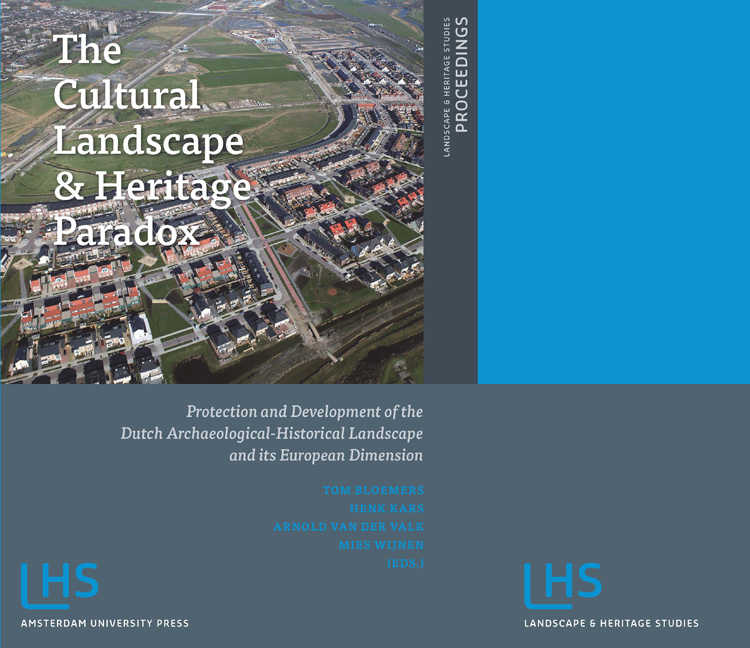 The Cultural Landscape and Heritage Paradox
The Cultural Landscape and Heritage Paradox Book contents
- Frontmatter
- Contents
- Preface
- I INTRODUCTION
- II INSIGHTS AND PROSPECTS OF ARCHAEOLOGICAL-HISTORICAL LANDSCAPE STUDIES
- III LINKING KNOWLEDGE AND ACTION
- IV IMAGINATION - FACTS AND CONSTRUCTIONS
- V SHARING KNOWLEDGE - STORIES, MAPS AND DESIGN
- VI SYNTHESIS AND CONCLUSIONS
- VII MANAGEMENT OF KNOWLEDGE
- VIII AGENDA FOR THE FUTURE
- IX SUMMARY
- X APPENDIX
- Subject Index
- Index of Places and Regions
2 - Revitalizing History: Moving from Historical Landscape Reconstructions to Heritage Practices in the Southern Netherlands
Published online by Cambridge University Press: 21 January 2021
- Frontmatter
- Contents
- Preface
- I INTRODUCTION
- II INSIGHTS AND PROSPECTS OF ARCHAEOLOGICAL-HISTORICAL LANDSCAPE STUDIES
- III LINKING KNOWLEDGE AND ACTION
- IV IMAGINATION - FACTS AND CONSTRUCTIONS
- V SHARING KNOWLEDGE - STORIES, MAPS AND DESIGN
- VI SYNTHESIS AND CONCLUSIONS
- VII MANAGEMENT OF KNOWLEDGE
- VIII AGENDA FOR THE FUTURE
- IX SUMMARY
- X APPENDIX
- Subject Index
- Index of Places and Regions
Summary
ABSTRACT
This paper presents the outline of a biographical approach to landscape as developed in the Netherlands during the last 15 years by archaeologists that focuses on the study of the longue durée interrelationships between spatial transformations, social and economic changes and the construction of regional and local identities in the region. This approach offers interesting possibilities for application in the sphere of heritage management, landscape design and spatial planning. The implementation of this biographical approach to landscape is illustrated by presenting a case study for the southern Netherlands, a semiurban region which ranks among the most intensively studied cultural landscapes of western Europe.
KEY WORDS
Landscape biography; cultural history, archaeology, heritage transmission; southern Netherlands
INTRODUCTION
There is a long tradition of regional landscape research in Dutch archaeology. By combining large-scale excavations with synthesizing academic research, the South Netherlands Project has established a special place within this tradition. This is the name often given to a loose collaboration of three archaeological institutes that have made this region a focal point of almost uninterrupted activity over the past thirty years (Fokkens 1996; Roymans 1996) Within various NWO-funded research programmes, we have constantly produced syntheses striving for theoretical and methodological innovation. As a result, the sandy landscape of the southern Netherlands now ranks among the best studied cultural landscapes in western Europe (Fig. 1).
The rapid development of landscape archaeological research in the southern Netherlands over the past three decades must be seen in conjunction with a major physical characteristic of Pleistocene sandy soils, that is the almost complete absence of a vertical stratigraphy in settlement traces. All traces from the Bronze Age to the modern era are generally found in a single excavation layer beneath the (pre-) modern arable top soil. This condition means that large surface areas on sandy soils can be excavated relatively cheaply, making the landscape ideal for research from a landscape archaeological perspective. The surge in archaeological excavations in past decades should also be understood in the light of recent dynamic economic growth which has seen the region rapidly transformed from a rural to a semi-urban landscape, a process that is still in full swing.
- Type
- Chapter
- Information
- The Cultural Landscape and Heritage ParadoxProtection and Development of the Dutch Archaeological-Historical Landscape and its European Dimension, pp. 387 - 406Publisher: Amsterdam University PressPrint publication year: 2010


